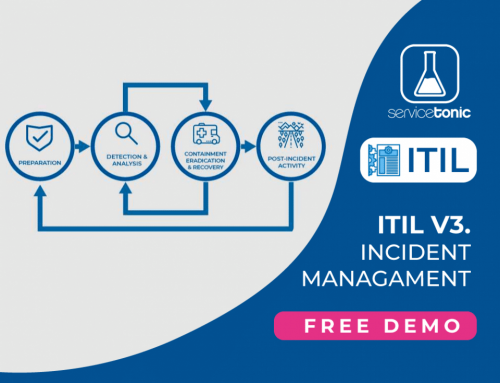Expanding the previous post on Incident Management with ITIL v3 we will delve into the challenges and risks of day-to-day incident management.
Challenges and risks
Some challenges:
Detect incidents as soon as possible.
Convincing everyone (technicians and users) of the utility of registering all incidents.
Promote the implementation of self-service mechanisms.
Have information available about known problems and errors.
Relate the incident management with the configuration elements.
Some key factors of success:
A good Service Desk is essential for Incident Management to work.
Clearly define the objectives of the Incident Management, including the SLA.
Have an IT management software suitable for the automation of the Incident Management activities, as well as the monitoring and control of the process.
Some risks:
To be flooded by a number of incidents that can not be assumed due to a bad sizing / capacity / training of both human and non-human resources.
The resolution of incidents does not progress adequately due to the lack of support tools that perform automatic tracking and generate notifications and alerts.
Breach of SLAs due to a lack of time information due to inadequate support tools.
OLAs (Operational Level Agreement) and / or UC (Underpinning Contract) not aligned with the objectives of the service.
Interaction of Incident Management with other ITIL processes
Problem Management
There are situations in which Incident Management generates problems: serious incidents, repetitive incidents, incidents of which the cause is unknown, etc.
Problem Management has to provide workarounds so that Incident Management restores the service as soon as possible.
Configuration management
It is possible that the incident is due to a malfunction of some configuration element. In this case, Incident Management must associate this element with the incident.
The CMDB (Configuration Management Database) provides information to Incident Management so that it can establish the impact of the incident.
Change Management
When the resolution of an incident (or the application of a workaround) implies the realization of a change, the Incident Management must generate the corresponding RFC (Request For Change).
The implementation of a change can cause incidents. These incidents must be related to the change that caused them.
Gestión del Nivel de Servicio
The Service Level Management must provide the time scales to the Incident Management.
Incident Management must provide management information to Service Level Management



